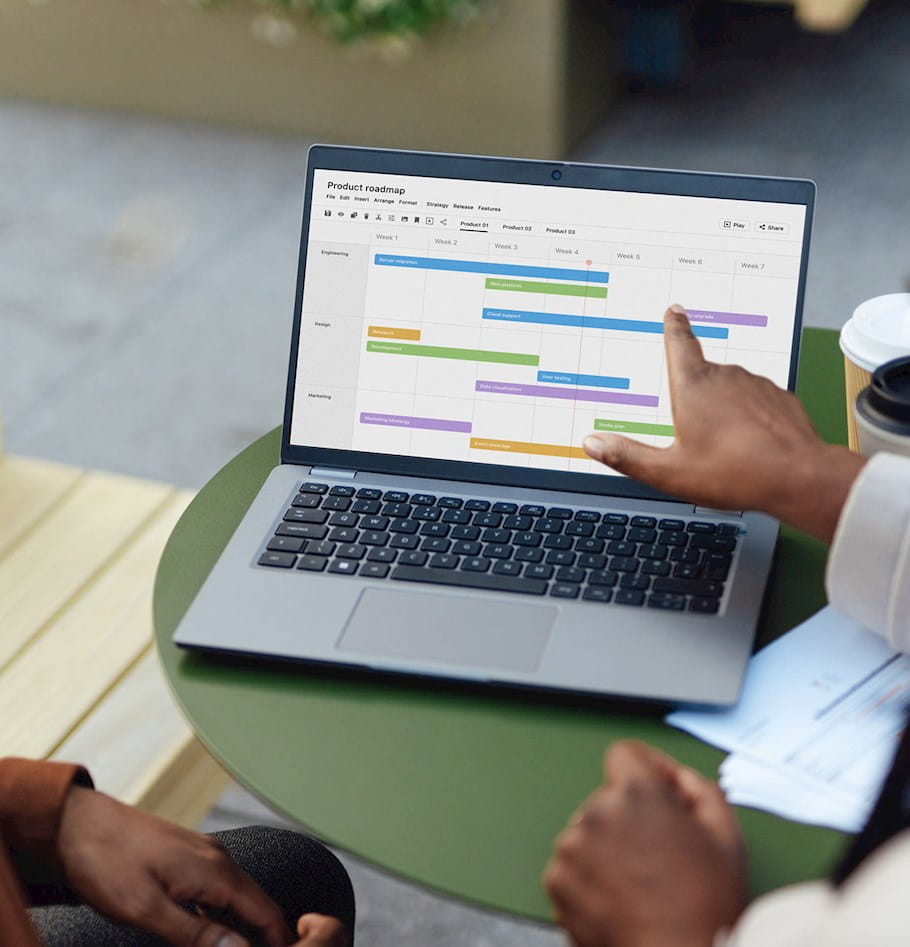Water Utility Outlook: Issues Impacting the Industry’s Future
A new generation of workers, battling climate change, and an increasingly digital focus will all define the next decade for the water industry
Get the full ReportIntro
It’s critical for the water industry to take new approaches to solve the continued challenges with underinvestment in infrastructure as well as the increasing impacts of climate change on infrastructure and operations. This coming decade will see a wave of skilled water-industry workers retiring, meaning the industry will need to quickly recruit and train the next generation of workers to fill these roles.
As utilities become increasingly digital—and as a large portion of the workforce has gone remote due to COVID-19—cybersecurity threats continue to grow. Water utilities are increasingly implementing and using analytics, which benefit both operations and customer experience. Customer experience became a priority for many utilities in the last 10 years, but many utilities still need to adjust to a more customer-centric model of operating.
In this water industry outlook, we discuss these challenges, dig into the trends we’re seeing, and lay out how the industry is tackling these issues:
- Renewal and replacement of aging infrastructure: Crumbling water infrastructure is in dire need of investment after decades of neglect
- Climate risk and resiliency: Tools and technology such as AMI and advanced water treatment can help enable conservation and increase water resources in drought-stricken areas.
- Growing cyber threat: A robust response plan is needed to limit the impact to operations, remain in regulatory compliance, and continue to deliver water to their customers in the event of a cyberattack.
- Leveraging analytics: The opportunity to create valuable insights and make data-based decisions on utility operations and engaging customers.
- Customer service expectations: Technology enables an increased frequency of quality interaction with customers leading to improved satisfaction.
Chapter 1: Renewal and replacement of aging infrastructure
The challenge
The U.S. historically underinvests in infrastructure, and water infrastructure is no exception. In 2017, the American Society of Civil Engineers (ASCE) gave the United States’ drinking water and wastewater infrastructure grades of D and D+, respectively. The American Water Works Association (AWWA) estimates that $1 trillion is required to repair and replace infrastructure that has aged past its useful life and to upgrade and expand for future stressors such as population growth and climate change.
At the current rate of replacement, it would take about 200 years to replace the entire system. This is double the useful life of these pipes. This underinvestment can be attributed to the failure of traditional financing mechanisms to meet the level of need. According to a 2016 Brookings Institute report, just 17% of water utilities feel they can cover the cost of service alone with rates and fees. Rates are kept low to maintain affordability, and available revolving funds make up only a small fraction of the nation’s total water spend, ultimately leaving a chronic funding gap when it comes to infrastructure maintenance and upgrades.
Trends
Non-revenue water
Non-revenue water is treated drinking water that leaves the treatment plant but is never billed. This disparity manifests in two ways: apparent loss and real loss. Apparent loss refers to mismeasurements due to meter inaccuracies or unauthorized consumption. Real loss occurs due to leaks in the distribution system, a direct effect of under-investment in infrastructure. According to the ASCE, more than 240,000 water main breaks occur every year, leading to a loss of over two trillion gallons, or 18%, of treated drinking water.
Urbanization and increasing demand:
Urbanization is occurring across the globe. According to the United Nations, urban areas are projected to absorb almost all the world’s population growth over the next 40 years.
Urbanization leads to increased competition for, and the resulting stress on, regional water resources, and requires increased capacity of treatment plants and expansion of distribution and collection systems as new developments are built.
Highly public water quality crises
There is a growing public perception that tap water is no longer safe to drink. This is due to several highly public lead crises (e.g., Flint, Michigan; Newark, New Jersey; and Chicago), the discovery of PFAS contaminants, the contamination of ground water from fracking, and the continuous release of nutrients from farms. These incidents collectively have raised public awareness of water systems and their vulnerabilities and have eroded customer trust in the water from their tap.
Taking Action
Financing
Utilities must rethink how to pay for infrastructure investment. Several states and countries have begun to use public-private partnerships as a new model for investing in infrastructure. This approach can reduce the financial burden on the public sector, reduce risk, and bring additional expertise to these projects.
New financing structures will be important as conservation efforts take effect. If customers are consuming less water, utilities will be bringing in less revenue, meaning they will need to adjust their rates model or have even more limited funds for infrastructure maintenance and improvement projects.
Cities like Gary, Indiana and Cincinnati, Ohio are working on lead service line replacement programs. These cities have gotten creative with funding these efforts by using combinations of federally funded Drinking Water State Revolving Funds, increases in water bills, a mix of capital and operating funds, and other measures. Economies of scale make it more cost-effective for utilities to fund this work rather than for customers to do so on an individual basis.
Asset Management
Download the full report to continue reading how you can take action.
Chapter 2: Climate risk and resiliency
The challenge
Aging infrastructure is facing another challenge: climate change, which greatly affects the water cycle. And as the earth continues to warm, these effects—on the amount, the timing, and the distribution of water—will continue to become more impactful to the current way of life.
Trends
Drought and water scarcity
Many parts of the U.S., but especially the Western half, face extreme drought and water scarcity. Less rainfall and snowpack and earlier snowmelt mean a lower supply of water will be available in summer months when demand is typically highest. Enduring drought will lead to large population migrations as people, animals, and industries seek out water rich areas. This significant shift will challenge utilities to meet and balance the needs of their customers with ecosystems and industries.
Rain events and increases in runoff, flooding, or sea level rise
In many parts of the U.S., the warming of the planet has caused the precipitation to fall as rain rather than snow. Increases in rainfall can cause water quality to suffer as storm, combined sewer, and wastewater systems become overwhelmed by the increased volume of water and runoff containing sediment, nutrients, pollutants, etc. is washed into surface waters. Source water contamination can lead to higher treatment costs. Flooding can damage critical infrastructure and resources and endanger lives. In Southern Florida, sea-level rise yields saltwater intrusion into the Biscayne Aquifer, putting the region’s primary source of drinking water at risk of contamination.
Taking action
Increasing resiliency
Some communities in water-scarce regions have taken it upon themselves to diversify their sources of drinking water. Southern California historically has relied on water coming from outside its geographic boundaries, but in order to decrease reliance on these external sources, communities have turned to other options such as recycling municipal and industrial wastewater, desalinating seawater, and increasing green infrastructure to optimize the capture of stormwater in its aquifers. This diversification reduces the risk associated with relying on one source for drinking water needs.
Policy can help incentivize smart water use and further enable conservation. For example, California passed legislation that defines mandatory water budgets of indoor water use per capita. Some communities across the country have instituted irrigation penalties as a means of both conservation of water resources, as well as limiting the amount of water that the utility cannot recapture and reuse.
Technology
Download the full report to continue reading how you can take action.

Large Texas-based water utility transforms water delivery to realize $350 million in benefits and meet the utility’s conservation goals
Read MoreChapter 3: Growing cyber threat
The challenge
Water utilities are using more automation, sensors, and devices in their water and wastewater systems than ever before. While beneficial in many ways, the implementation of new technologies also brings security concerns. As sensors proliferate across water delivery networks, new strategies and technologies are needed to manage the convergence of information technology (IT) and operational technology (OT). Data must be accessible and actionable to the right parties but fully secure from malicious actors. Utilities must undertake cybersecurity measures to keep water systems safe from external threats.
Trends
Utility executives cite cybersecurity of OT systems and devices as their top concern in a West Monroe survey. This concern is especially warranted in the water utility sector, given its disparate nature and relatively immature cyber security posture compared to the power sector.
In the past year, there have been ample intrusions that reminded utility officials of the turmoil that can erupt if an employee clicks on a malicious link or treats a password with insufficient caution. Attacks like the one that crippled Baltimore Water’s ability to bill its customers grabbed headlines, but the frequency of cyber assaults tells an even more harrowing story.
Taking action
Combatting cyber threats requires a culture of security awareness and sensitivity throughout the utility. The best cybersecurity programs are founded on the understanding that it is a matter of getting everyone in the organization to work together to address threats, rather than just deploying a few resources to shore up risks. Well-prepared utilities promote resiliency; they right-size and optimize security investments to address business objectives on an evolving threat environment. When utilities invest in infrastructure to enhance resiliency and integrate tools to protect the water system, they also build in rapid response and recovery plans as a core part of the infrastructure project.
A robust response plan involves several important steps:
Download the full report to continue reading how you can take action.
Chapter 4: Leveraging analytics
The challenge
Water utilities operate in a fragmented market. The high volume of small, regional water providers results in higher rates, dated technology, varying water quality, and inconsistent delivery of customer service. Water utilities face increasing pressure from city councils and regulators to operate efficiently, deploy customer-centric and secure technology systems, and deliver better customer service. An increasingly modernized water infrastructure landscape brings opportunities to gain insights into the utility’s water system, but it also presents a challenge of how to use the data most effectively to extract value for the utility and customers.
Trends
With the increase of IoT technology in the water industry over the past few years, utilities are seeing an influx of new data that can help inform planning, achieve conservation goals and mandates, prioritize maintenance, and detect both leaks and high consumption patterns.
Collection and combination of data from sources across the distribution system, like AMI, paired with other sensing and monitoring techniques and technologies such as district metered areas (DMAs) combined with flow, pressure, temperature, and acoustic sensors can allow for more robust analytics and operation of the distribution system, an optimized ability to pinpoint leaks or imminent failure, and improved water quality at the point of use.
For example, utilities that have already deployed significant IoT devices throughout their infrastructure are leveraging digital twins, which provide logical representations of their distribution network and assets. Digital twins can be used in many ways, including to model scenario and sensitivity analyses, provide operations with accurate, real-time information to assist with incident response, and aid in the long-term planning processes.
Further, water utilities that use an AMI network in parallel with a meter data management system (MDMS) can perform analytics on specific meter types and customer types to identify underperforming meters and theft. Some vendors analyze consumption signatures to provide customized suggestions to customers on how they can minimize their usage or repair or replace inefficient appliances. Providing this customized, granular feedback is increasingly expected by customers, and will be a formidable tool in helping states reach their conservation goals.
Automation can also go a long way toward streamlining the routine tasks that can inefficiently occupy employees, such as reading meters and billing customers. In addition to delivering better service, data and automation initiatives can dramatically improve productivity and reduce costs while also improving overall employee engagement. At the macro level, third-party technology platforms are employing AI and machine learning to assess real-time data remotely to alert for and pinpoint precise locations of system leaks and other significant events within the distribution system, allowing utilities to take a proactive approach to maintenance and asset management. In this vein, many water utilities have begun implementing DMAs to logically break up the larger distribution system and using meters at points of ingress and egress of each district to detect and measure water loss across the system at a more granular level.
Taking action
These technological advances, among others, have allowed utilities to gather data at unprecedented levels. This data can be used to deliver rich information to utility executives, asset managers, operations teams, and customers while identifying ways to improve efficiency. Actionable data in the hands of these stakeholders can improve work and maintenance prioritization, enhance customer service and engagement, and improve revenue and billing, among other benefits. In order to achieve those results, a few suggested analytics are:
Download the full report to continue reading how you can take action.
Chapter 5: Customer service expectations
The challenge
Water utilities do not have to compete in the market for customers. While the water industry has traditionally been more focused on creating and distributing clean water and maintaining assets, customers have grown accustom to having their needs fulfilled with the touch of a button. This convenience has raised expectations of customer service across all industries, and the water industry is now starting to embrace new approaches to customer experience.
Trends
High customer expectations
With digitalization sweeping the globe, more interactions are happening online and in real time. This reduces the amount of effort the customer must put in and produces a more satisfying customer journey. It also reduces the amount of time customer service agents spend on the phone with customers, reducing costs for the utility. When customers have a problem, they expect an on-demand response—this can occur online via chatbot or instant messaging rather than via phone.
Technology advancement
Utilities have started adopting technology such as interactive voice response (IVR), customer relationship management platforms, and customer portals—all of which provide an enhanced experience for the customer. A customer portal allows for expanded functionality such as seeing their water consumption patterns, paying their bills, and setting conservation goals. As smart home and smart metering technologies see expanded adoption, these features will become more widespread.
Taking action
Water utilities must leverage developments in customer relationship technologies to reduce costs on the utility side and enhance the experience on the customer side. These systems can provide the 360-degree view of the customer which, coupled with more advanced analytics, will enable the utility to develop more personalized interactions with the customer.
Improving analytics and building out channels to interact with the customer will allow water utilities to shift to more active and real-time communications with the customer. Proactively informing the customer of main breaks, boil water orders, planned maintenance, leaks, etc. will lead to an improved customer experience. A 2020 JD Power report showed that proactive communications have a powerful effect on customer satisfaction.
Download the full report to continue reading how you can take action.
Conclusion
Myriad challenges lie ahead for the water industry in the coming decade. There’s also a great opportunity for water utilities to incorporate new technologies into their current operations, equip their employees with new skillsets, and utilize younger generations’ perspectives and talents to advance the industry to a place that embraces innovation and new solutions rather than one playing catch-up.
The industry must work with its customers and develop new partnerships to generate new funding sources and solutions to decades-old problems. Creativity, engagement, trust, and stepping out of comfort zones will be required for utilities to upgrade their infrastructure to build a resilient system to deliver affordable and high-quality water to customers in the face of climate change.
------------------
Contributors: Liz Alexander, Kaitlyn Zolton, Tricia Anklan, and Michael Wayman.



